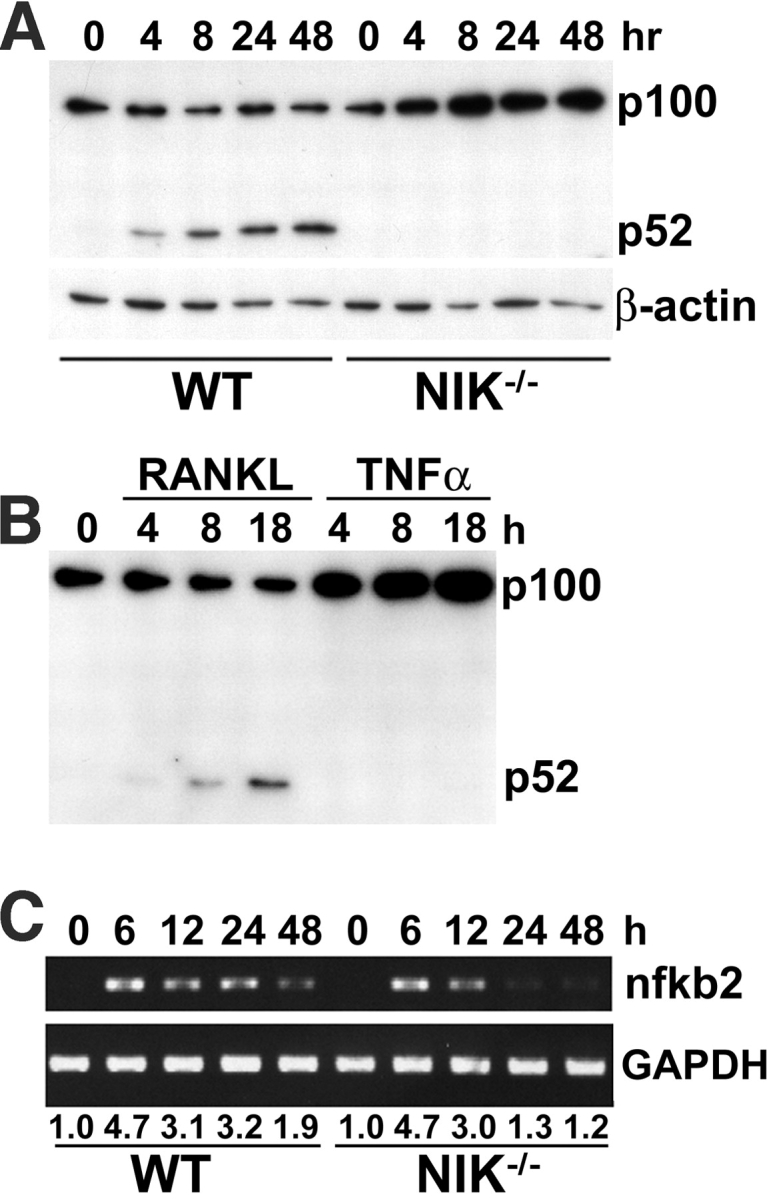Figure 3.

RANKL-induced p100 processing does not occur in NIK−/− OC precursors despite normal induction of nfkb2 transcription. (A) WT and NIK−/− Mφs were treated with RANKL for increasing times, and total lysates were analyzed by immunoblot to detect changes in p100 and p52 levels, using a monoclonal antibody recognizing the NH2 terminus common to p100 and p52. The blot was stripped and reprobed with anti-β actin as a loading control (bottom). In WT cultures, p100 levels remain steady, whereas p52 levels are increased by RANKL treatment. Parallel NIK−/− cultures fail to generate p52 at any time point and accumulate p100. (B) WT Mφs were treated with RANKL or TNFα for the indicated times, and p100/p52 levels were assessed by immunoblot as in A. p100 processing does not occur in response to TNFα. (C) WT and NIK−/− Mφs were treated with RANKL for increasing times, and RNA was harvested. Levels of nfkb2 mRNA were analyzed by semiquantitative RT-PCR using GAPDH as a control. Numbers beneath lanes indicate fold increase over WT 0 h baseline. Although WT and NIK−/− cultures show equivalent induction of nfkb2 at 6–12 h, levels are significantly lower in NIK−/− cultures thereafter.
